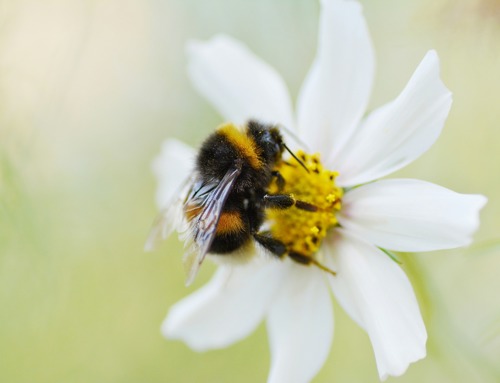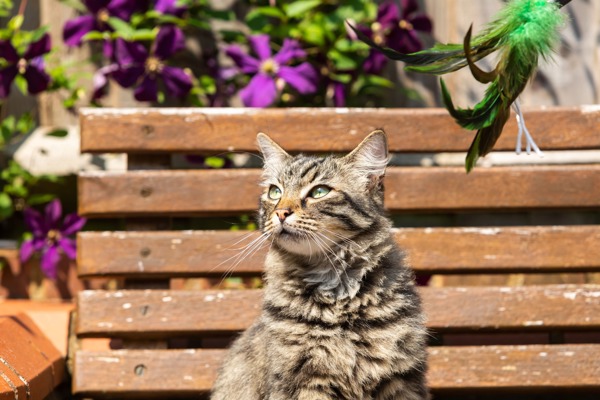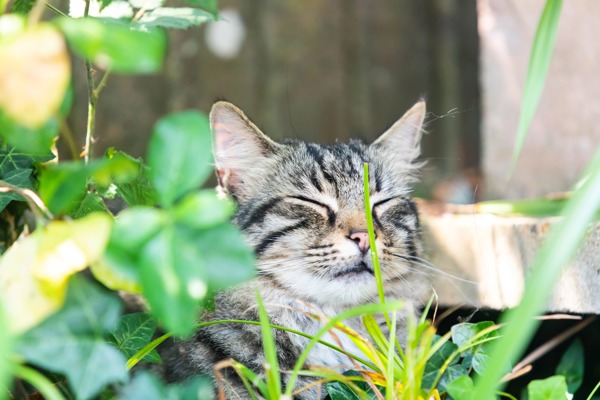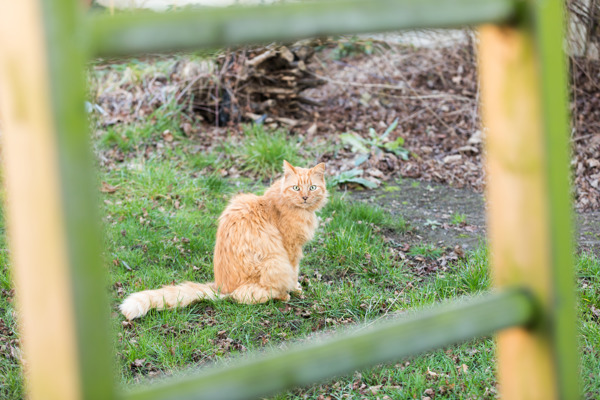What to do if your cat gets stung by a bee or wasp
Bees and wasps are great for the environment as they pollinate plants to help them reproduce. But if you’ve ever got on the wrong side of a bee or wasp, you’ll know they also pack a nasty sting. There’s no doubt that bee and wasp stings are painful for us, but can cats get stung too?
Registered Veterinary Nurse Helen Crofts explains what to do if your cat has a run-in with a bee or wasp.

Can cats get stung by bees and wasps?
Like humans, cats can get stung by bees and wasps. Particularly cats who are curious and like to swat or bite at flying insects.
The most common places for cats to be stung are:
- on the face
- on the paws
- in the mouth
How to tell if your cat has been stung
Most cats will only experience a mild reaction to a bee or wasp sting.
Signs of a mild reaction to a sting:
- sudden yowling or pawing at the face or body
- swelling of the affected area
- limping or holding up a paw
- excessive licking or grooming of the area
Some cats may have a more severe reaction to a sting, especially if they’re stung multiple times, or stung in the mouth or throat. Some cats may even be allergic to bee or wasp stings and have an allergic reaction.
Signs of a severe or allergic reaction to a sting:
- excessive swelling
- vomiting
- diarrhoea
- drooling
- pale gums
- difficulty breathing
- collapse

Left: Indi the cat. Right: Indi the cat after having a mild reaction to a bee sting. The left side of her face is swollen where she was stung
How quickly will a cat react to a bee or wasp sting?
If your cat has a mild reaction to the sting, symptoms such as swelling and pain will likely appear within a few minutes. If your cat is allergic to the sting, a reaction could appear immediately or within 24 hours after the sting.
Are bees and wasps dangerous to cats?
In most cases, bee and wasp stings will only cause mild, localised pain and swelling for cats.
But if your cat has multiple stings, or stings to the mouth or throat, it can be dangerous for them.
A small percentage of cats are allergic to bee or wasp stings. They may go into anaphylactic shock, which is a medical emergency.
What do I do if my cat gets stung by a bee or wasp?
If your cat shows signs of a severe or allergic reaction to a sting:
- Call your vet immediately. Getting your cat emergency treatment is important to ensure they recover quickly.
If your cat shows signs of a mild reaction to a sting:
- Remove the stinger. If you can see the stinger, and if your cat will let you, try to remove it. Don’t squeeze the stinger out, as this could force the venom into the wound. Instead, try to scrape the stinger out with your fingernail or a straight-edged object such as a credit card. If you are unable to remove the stinger yourself, take your cat to the vet so they can do it for you.
- Reduce swelling. Apply a cold compress to reduce any swelling around the sting site.
- Monitor your cat. Signs of a severe or allergic reaction can still appear up to 24 hours after a sting. Keep an eye on your cat, and if you notice these signs, call your vet immediately. If your cat is still experiencing pain or swelling from a sting after 24 hours, call your vet for advice.
What do vets do for bee and wasp stings?
The best bee or wasp sting treatment for cats will depend on the severity of their reaction.
If your cat has a mild reaction to a bee or wasp sting, your vet may prescribe anti-inflammatories or antihistamines. These help to reduce any swelling and pain that persists after 24 hours.
If your cat has had an allergic reaction to the sting, a stay at the vets may be necessary. The vet may give your cat medication to help open their airways and reduce any swelling. They may also give your cat oxygen and intravenous (IV) fluids to maintain blood pressure and help them breathe.
Will my cat be OK after a bee or wasp sting?
If your cat has had a single sting and mild reaction, they should recover fully with minimal treatment.
Cats with allergies, multiple stings, or stings to the mouth or throat will need urgent care. But they can recover well if they receive treatment quickly.
What should I do if my cat ate a bee or wasp?
If your cat has eaten a bee or wasp but not been stung, the insect will likely pass through their digestive system harmlessly.
If your cat has been stung in the mouth or throat, watch out for signs of a severe reaction, such as drooling, swelling or breathing issues. If you notice these signs, call your vet immediately.
8 tips to protect cats and bees in your garden

Despite the risk of bees stinging cats and cats eating bees, the two creatures can still live in harmony in your garden. Here are some top tips for creating a garden paradise for both cats and bees.
- Plant cat and bee-friendly flowers. The best plants that attract bees and are also safe for cats are cat mint, buddleia and nasturtiums. Find out about cat-safe plants.
- Avoid pesticides. Instead, use spot-treatments made with fatty acids or plant oils that are harmless to bees and cats.
- Add water stations. Provide a shallow water dish with marbles or pebbles in it so bees can drink without drowning and cats can’t tip it over.
- Create shady spots. Create shady ‘bee breaks’ by leaving a small patch of longer grass in your lawn. This also gives cats a shady spot to lounge away from pollinator hotspots.
- Mow in the evenings. Most bees are less active in the evening, and cats are indoors for their evening meal.
- Supervise your cat. If your garden attracts lots of bees, supervise your cat when they go outdoors to make sure they don’t try to swat or eat the bees. If they show an interest in the bees, try distracting them with a suitable toy to play with instead.
- Use natural deterrents. Cats don’t like strong smells such as citrus. Try placing plants or items with strong scents near any bee-friendly flowers to encourage your cat to stay away. Find out how to deter cats safely.
- Keep bees out of reach. If you have beehives or bee feeding stations in your garden, try to put them out of your cat’s reach.



